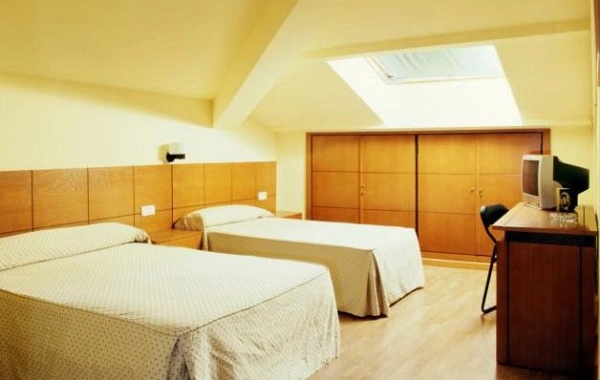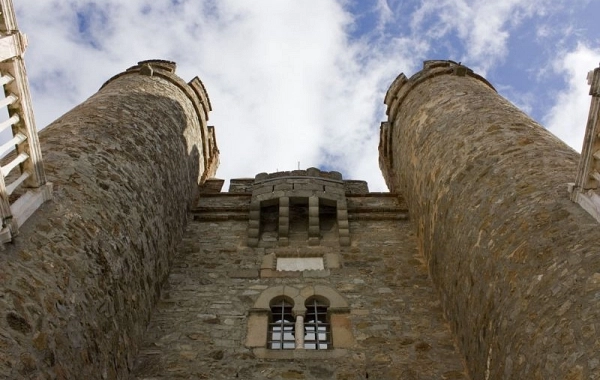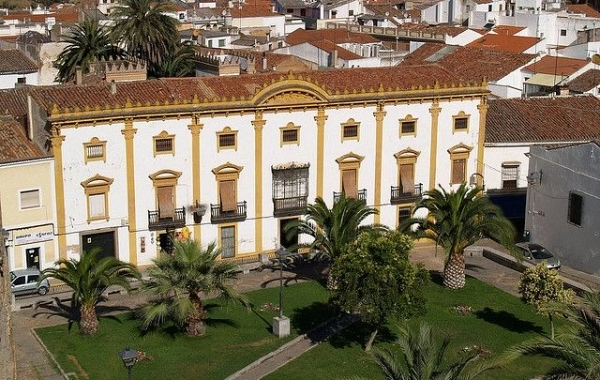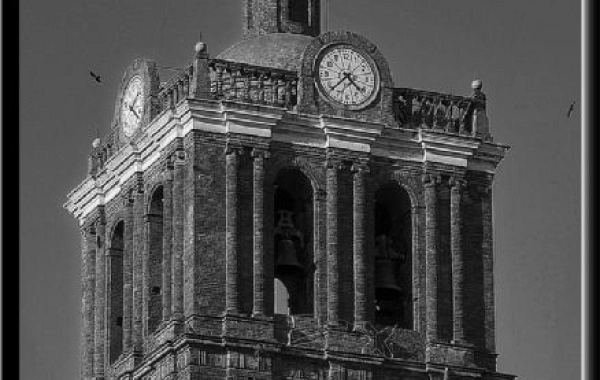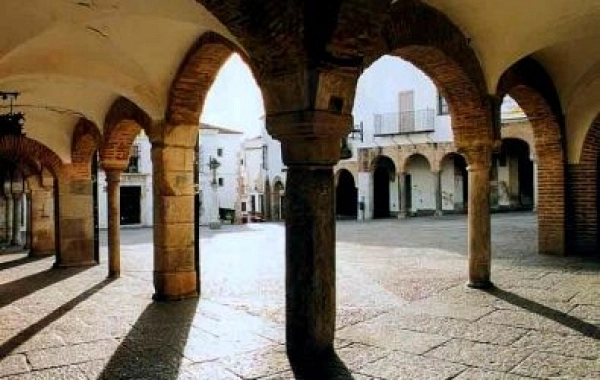VP06 - Fuente de Cantos - Zafra - 24,6 km
Distance25 Km.Related packages
In this stage of the Camino de Santiago, pilgrims enjoy a historic and picturesque journey, passing through small towns with a rich cultural tradition. Below, we detail everything you need to know about this route.
Departure from Fuente de Cantos
Dirt Road and Roman Road
The stage begins on a well-maintained dirt road that follows the path of the ancient Roman road, connecting the pilgrim to the oldest history of the Camino de Santiago. This section is ideal for history and rural landscape lovers.
Arrival at Calzadilla de los Barros
Fortress Church of El Salvador
Soon, we arrive at Calzadilla de los Barros, a small village famous for its Fortress Church of El Salvador, built in the 15th century. This building not only holds historical and architectural value but also houses an impressive Gothic-Renaissance altarpiece, considered one of the best in Extremadura. Among its panels, one of the most significant is the St. James the Pilgrim panel, a central symbol of the Camino de Santiago.
Crossing the Atarja River and Arrival at Puebla de Sancho Pérez
A Stroll Along the Atarja River
Following the Camino de Santiago, we cross the bridge over the Atarja River, leading us towards Puebla de Sancho Pérez. This village is another point of interest on the route. After crossing it, we take the road to Zafra, the end of our stage.
Zafra: End of Stage and Historical Heritage
History and Culture of Zafra
Upon reaching Zafra, the pilgrim is met with a city of great historical value. With deep roots in the Christian Reconquest, Zafra was conquered twice by Alfonso IX and Fernando III the Saint. It was granted to the Order of Santiago, which made it an important center of power and commerce. Additionally, Zafra has a rich chivalric tradition and is known as "the city of fairs".
Altitude: 508 m
Distance to Almendralejo: 38 km
What to See in Zafra
Zafra is a place full of monuments and historical sites that make it an essential point of interest for pilgrims. Some of the main tourist attractions in Zafra include:
- Palace of the Dukes of Feria: A monumental building reflecting the grandeur of the local nobility.
- Convent of Santa Clara: A place of tranquility and spirituality.
- Casa Grande: A sample of the region's traditional architecture.
- Hospital of Santiago: Tied to the history of the Camino de Santiago.
- Plaza Grande and Plaza Chica: The main squares in the historic center.
- Urban Wall: Remnants of the old city wall that once defended the city.
- Jewish Quarter: A corner of great historical and cultural value.
- Plazuela: A picturesque place full of history.
- Colegiata de la Candelaria: An impressive religious building.
- Casa del Ajimez: An example of the typical architecture of the city.
Conclusion: A Historic End to the Stage
Zafra is the end of this stage of the Camino de Santiago. However, the journey doesn't end here, as pilgrims can continue exploring other stages of the Camino towards Almendralejo or enjoy more historical treasures of Extremadura. With the map of the Camino de Santiago in hand, the journey continues offering opportunities to discover more of the rich history and beautiful paths that are part of this pilgrimage towards Compostela.
Stages
- VP01 Sevilla - Guillena , 22 km
- VP02 - Guillena - Castilblanco de los Arroyos - 19 km
- VP03 - Castilblanco de los Arroyos - Almadén de la Plata - 29,5 km
- VP04 - Almadén de la Plata-Monesterio - 34,5 km
- VP05 - Monesterio-Fuente de Cantos - 21,6 km
- VP06 - Fuente de Cantos - Zafra - 24,6 km
- VP07 - Zafra - Almendralejo - 36,7 km
- VP08 - Almendralejo - Mérida - 29,6 km
- VP09 - Mérida - Alcuéscar - 36 km
- VP10 - Alcuéscar - Valdesalor - 25,7 km
- VP11 - Valdesalor - Casar de Cáceres - 22,8 km
- VP12 - Casar de Cáceres - Cañaveral - 33,2 km
- VP13 - Cañaveral - Galisteo - 28 km
- VP14 - Galisteo - Cáparra - 29,5 km
- VP15 - Cáparra - Baños de Montemayor - 28,5 km
- VP16 - Baños de Montemayor - Fuenterroble de Salvatierra - 32,9 km
- VP17 - Fuenterroble de Salvatierra - San Pedro de Rozados - 28 km
- VP18 - San Pedro de Rozados - Salamanca - 23,4 km
- VP19 - Salamanca- El Cubo de la Tierra del Vino - 35 km
- VP20 - El Cubo de la Tierra del Vino - Zamora - 31,6 km
- VP21 - Zamora - Montamarta - 18,5 km
- VP22 - Montamarta - Granja de Moreruela - 22,7 km
- VP23 - Granja de Moreruela - Benavente - 25,5 km
- VP24 - Benavente - Alija del Infantado - 22,1 km
- VP25 - Alija del Infantado - La Bañeza - 20,5 km
- VP26 - La Bañeza - Astorga - 24,2 km





